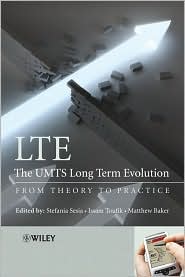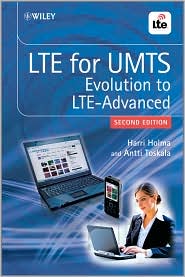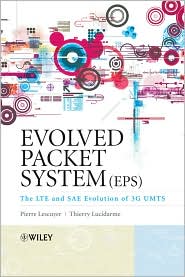|
Search Wireless Dictionary
|
|
 UMTS Long Term Evolution - LTE
UMTS Long Term Evolution - LTE
Universal mobile telecommunications system long term
evolution is a set of improvements to the 3rd generation wireless systems.
These improvements include 100 Mbps+ data transmission rates, reduced
transmission delays (reduced latency), increased system capacity and
shorter transmission latency times.
The UMTS LTE system allows cellular carriers to offer
a very efficient (more subscribers per cell site) mix of multimedia
services (voice, data, and video) for existing (mobile telephone) and new
(Internet and television) customers. The UMTS LTE system is designed to
permit advanced and reliable services including media streaming and large
file transfers. These new services offer the potential of higher average
revenue per user (ARPU) than existing 1st and 2nd
generation mobile customers. For existing mobile carriers that upgrade to
UMTS LTE, marketing is geared towards acquiring new data-only and mobile
television customers.
UMTS LTE is the natural evolution of 3GPP GSM and
UMTS WCDMA networks. Since LTE provides services above the original 3rd
generation (3G) requirements, but does not provide service levels for 4th
generation (4G) requirements, it is sometimes called “Beyond 3G”.
The key attributes of a UMTS LTE system include a
variable bandwidth (1.4 MHz up to 20 MHz) OFDM radio channel, the
co-existence of multiple physical channels on the same frequency using
channel codes, many logical (transport) channels, separate signaling
channels, multiple service QoS types, multi-system operation, and other
advanced operational features.
Each wide (20 MHz) UMTS LTE RF channel can have more
than 800 simultaneous communication channels. Some of the channels are
used for control purposes, while others are used for voice (audio) and
user data transmission.
The system components of the UMTS LTE system are
based on a single IP packet core network. The system was designed to
interoperate with the GSM system and its family of evolved systems (GPRS,
EDGE, HSPA, and WCDMA), among other system types (CDMA2000 and WiMAX). The
UMTS LTE system was designed to interoperate with UMTS 3G and GSM systems,
which allows for the gradual migration of UMTS and GSM customers to
advanced UMTS LTE digital services.
The UMTS LTE system is composed of mobile devices
(wireless telephones and data communication devices called user equipment
- UE), radio towers (cell sites) called evolved Node Bs (eNBs), and packet
data interconnection systems (packet switches and data routers).
This figure shows a simplified diagram of a UMTS LTE
system. This diagram shows that the system includes various types of
mobile communication devices (called user equipment - UE) that can
communicate through an evolved node B (eNB) and an enhanced packet core (EPC)
packet switching system. This diagram shows that the UMTS LTE system is
compatible with the new variable width LTE channels, 5 MHz wide WCDMA
radio channels, and narrow 200 kHz GSM channels. This example also shows
that the UMTS LTE system can provide broadcast video, multimedia (mixed
data), and voice services.

UMTS LTE System Diagram
 Related UMTS LTE Definitions
Related UMTS LTE Definitions
Orthogonal
Frequency Division Multiplexing (OFDM)
Single Carrier Frequency Division Multiple Access - SC-FDMA
Peak to Average Power Ratio - PAPR
Multiple Input Multiple Out - MIMO
Channel Raster
Resource Blocks
Physical Downlink Channels
Physical Downlink Shared Channel - PDSCH
Physical Multicast Channel - PMCH
Physical Downlink Control Channel - PDCCH
Physical Broadcast Channel - PBCH
Physical Control Format Indicator Channel - PCFICH
Physical Hybrid ARQ Indicator Channel - PHICH
Physical Uplink Channels
Physical Random Access Channel - PRACH
Physical Uplink Shared Channel - PUSCH
Physical Uplink Control Channel - PUCCH
Type 1 Frame
Type 2 Frame
Broadcast Channel - BCH
Downlink Shared Channel - DL-SCH
Paging Channel - PCH
Multicast Channel - MCH
Uplink Shared Channel - UL-SCH
Random Access Channel - RACH
Broadcast Control Channel - BCCH
Paging Control Channel - PCCH
Common Control Channel - CCCH
Multicast Control Channel - MCCH)
Dedicated Control Channel - DCCH
Dedicated Traffic Channel - DTCH
Multicast Traffic Channel - MTCH
Channel Mapping
 UMTS LTE Books
UMTS LTE Books
|
more
details
|
UMTS
LTE
This book explains the basic components,
technologies used, and operation of UMTS LTE systems. Discover the
key features that LTE systems provide that go beyond the capabilities
of existing 2G and 3G mobile systems such as ultra high-speed Internet
(100 Mbps+), television (multicast video), and low latency services
(packet voice).
$19.99
Printed, $16.99 eBook
|
  
  |
 |
|
LTE for UMTS: Evolution to LTE-Advanced  LTE: The UMTS Long Term Evolution: From Theory to Practice |
Evolved Packet System (EPS): The LTE and SAE Evolution of 3G UMTS |
|
LTE: The UMTS Long Term Evolution:
From Theory to Practice
Stefania Sesia (Editor), Matthew Baker (Editor), Issam Toufik (Editor),Hardcover,
English-language edition,Pub by Wiley, John & Sons,
Incorporated |
LTE for UMTS: Evolution to LTE-Advanced
Harri Holma,Hardcover - Revised Edition, Edition: 2,
English-language edition,Pub by Wiley, John & Sons,
Incorporated |
Evolved Packet System (EPS): The LTE
and SAE Evolution of 3G UMTS
Pierre Lescuyer, Thierry Lucidarme,Hardcover - New Edition,
English-language edition,Pub by Wiley, John & Sons,
Incorporated |
 Add this Wireless Dictionary tool to your web site Add this Wireless Dictionary tool to your web site
In order to add this Wireless dictionary tool to your web site and give your visitors
the way to lookup industry terms from more than 11,000 terms, acronyms, and definitions, just copy the HTML code below and put it into your web page where you want to provide access to your dictionary.
|



